Tackling Thinning Hair for Men: The Ultimate Guide to Hairstyles & Solutions | Expert Tips
Embracing Change: A Modern Approach to Men's Thinning Hair
Noticing your hair isn't as thick as it once was can be a daunting experience. For many men, thinning hair feels like a loss of control, but it's a common and natural part of life. The good news is that you have more options than ever to manage, conceal, and even embrace it with style and confidence. The key isn't to fight a losing battle with complex comb-overs, but to adapt with smart haircuts, strategic styling, and a proactive approach to hair and scalp health. Tackling thinning hair for men is about working with what you have to create a look that is sharp, modern, and authentically you.
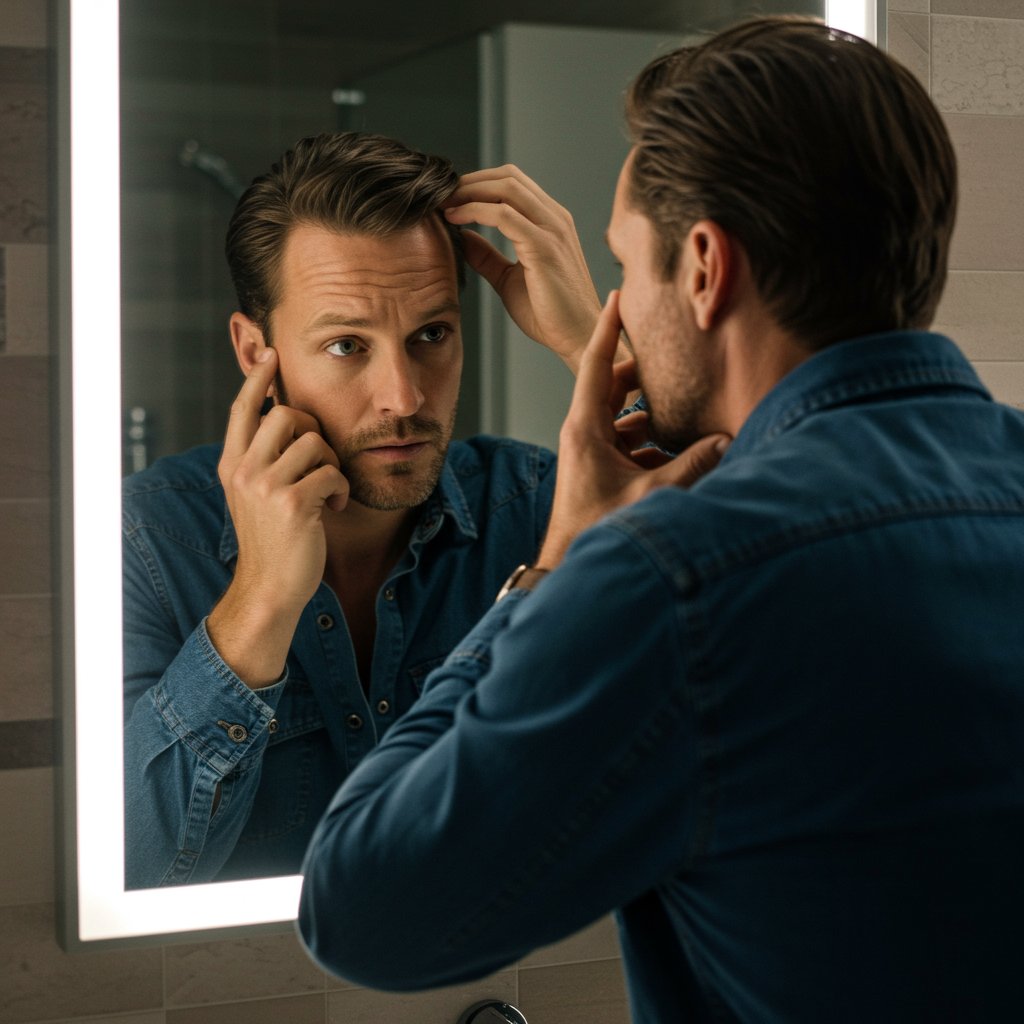
This comprehensive guide is designed to be your ultimate resource. We'll move beyond the myths and anxieties, focusing instead on actionable solutions. We will explore the principles behind haircuts that create the illusion of density, dive into specific styles for different patterns of hair loss—from a receding hairline to a thinning crown—and equip you with the knowledge of products and techniques that make a real visual difference. Forget the idea that thinning hair limits your options; with the right approach, you can find a signature style that enhances your features and boosts your confidence. Consulting with an experienced stylist is your first, most powerful step toward achieving this.
Understanding the 'Why': A Brief Look at Male Hair Thinning
Before diving into the solutions, it's helpful to understand the primary reasons behind hair thinning in men. While factors like stress, diet, and medical conditions can play a role, the most common culprit is androgenetic alopecia, also known as male pattern baldness. This is a genetic trait inherited from your family, and it's driven by a byproduct of testosterone called dihydrotestosterone (DHT). DHT can shrink hair follicles over time, leading to finer, shorter hairs until, eventually, the follicle stops producing hair altogether. This process typically manifests in predictable patterns, such as a receding hairline (forming an 'M' shape) or thinning at the crown (the vertex) of the head.
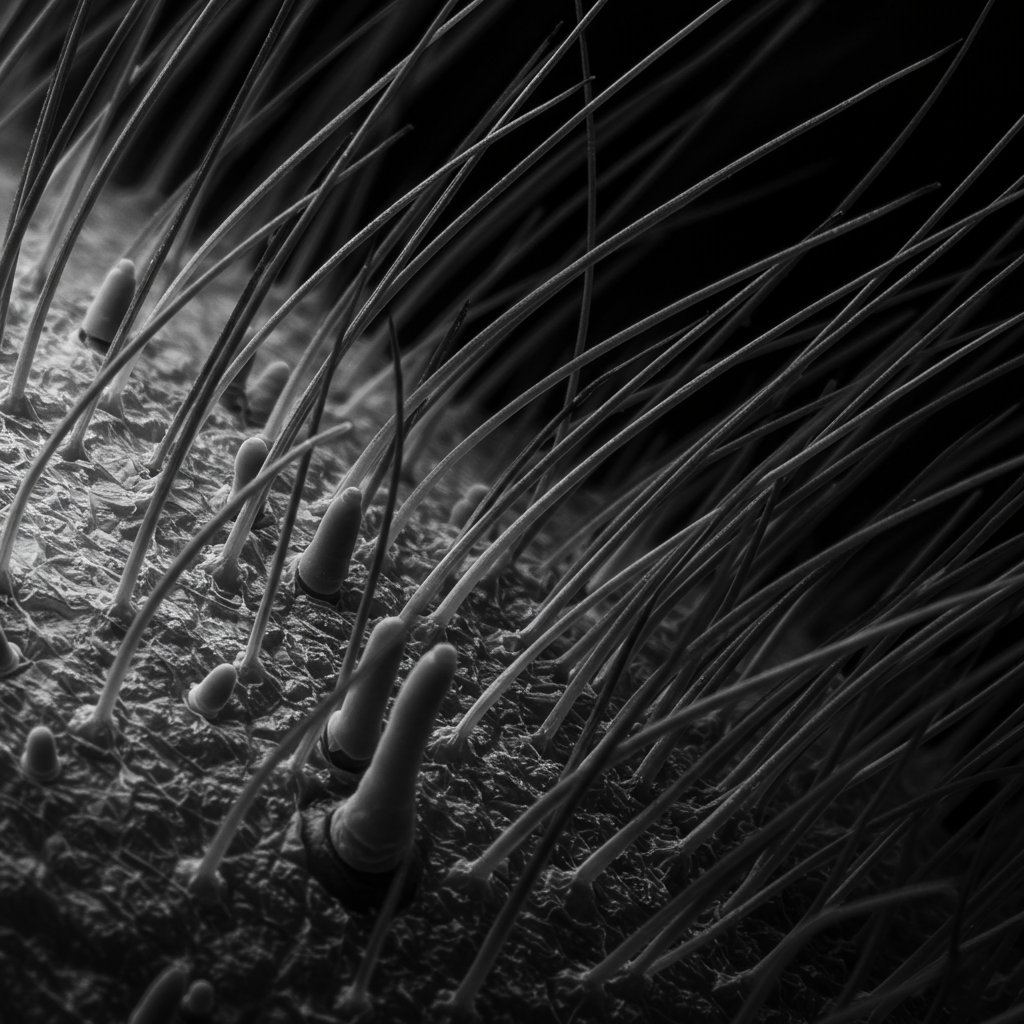
Recognizing your specific pattern of thinning is crucial because it informs the most effective haircutting and styling strategies. A stylist can help you identify whether you're experiencing thinning primarily at the temples, on the crown, or a more diffuse thinning all over. It’s also important to note that age naturally affects hair density. As men get older, the diameter of each hair strand tends to decrease, contributing to a less voluminous look. The goal isn't to reverse genetics in the salon chair, but to use masterful cutting and styling techniques to make your hair appear as full and healthy as possible, no matter the cause or pattern.
The Power of a Great Haircut: Key Principles for Thinning Hair
The foundation of successfully managing thinning hair is a strategic, well-executed haircut. The wrong cut can accentuate sparse areas, while the right one can create a dramatic illusion of thickness and density. The core principle is to shift focus away from the areas of thinning and toward your stronger features. This is achieved by managing length and weight distribution. Keeping the sides and back of the hair shorter and tighter creates a cleaner, more balanced silhouette. This contrast makes the hair on top appear fuller and more substantial, even if it's finer. This is the logic behind styles like the crew cut or the high and tight.
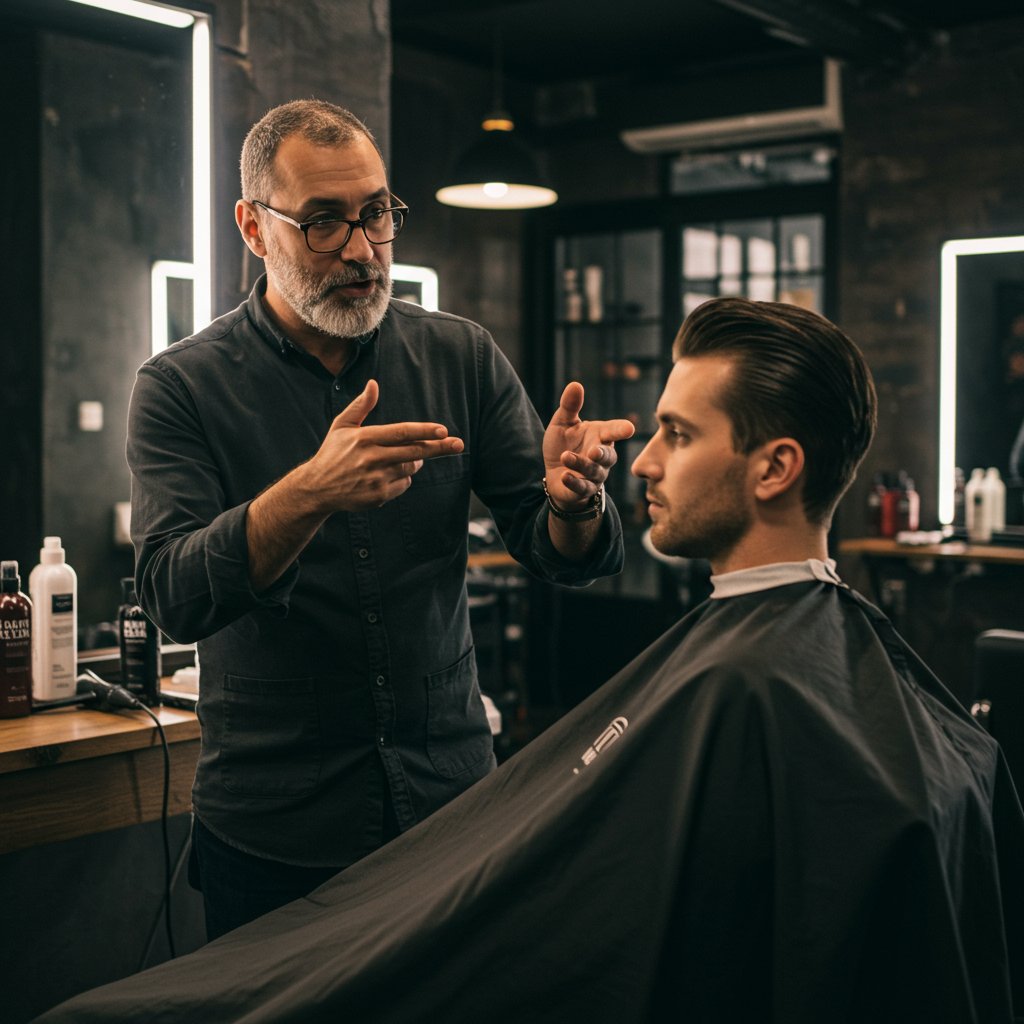
Texture is another powerful tool in your stylist's arsenal. Instead of sleek, uniform styles that can expose the scalp, incorporating choppiness and texture breaks up the hair and creates a more voluminous, multi-dimensional look. A stylist might use techniques like point cutting or razor cutting to add movement and prevent the hair from lying flat. Finally, it's essential to work with your natural hairline, not against it. A forced, unnatural style like a traditional comb-over is often the first thing people notice. Embracing a shorter style or a haircut that complements a receding line looks far more confident and intentional.
Top Hairstyles for a Receding Hairline
A receding hairline is one of the most common first signs of thinning. Instead of trying to grow the front long to cover it, the best strategy is to choose a style that incorporates the new hairline into a sharp, masculine look.
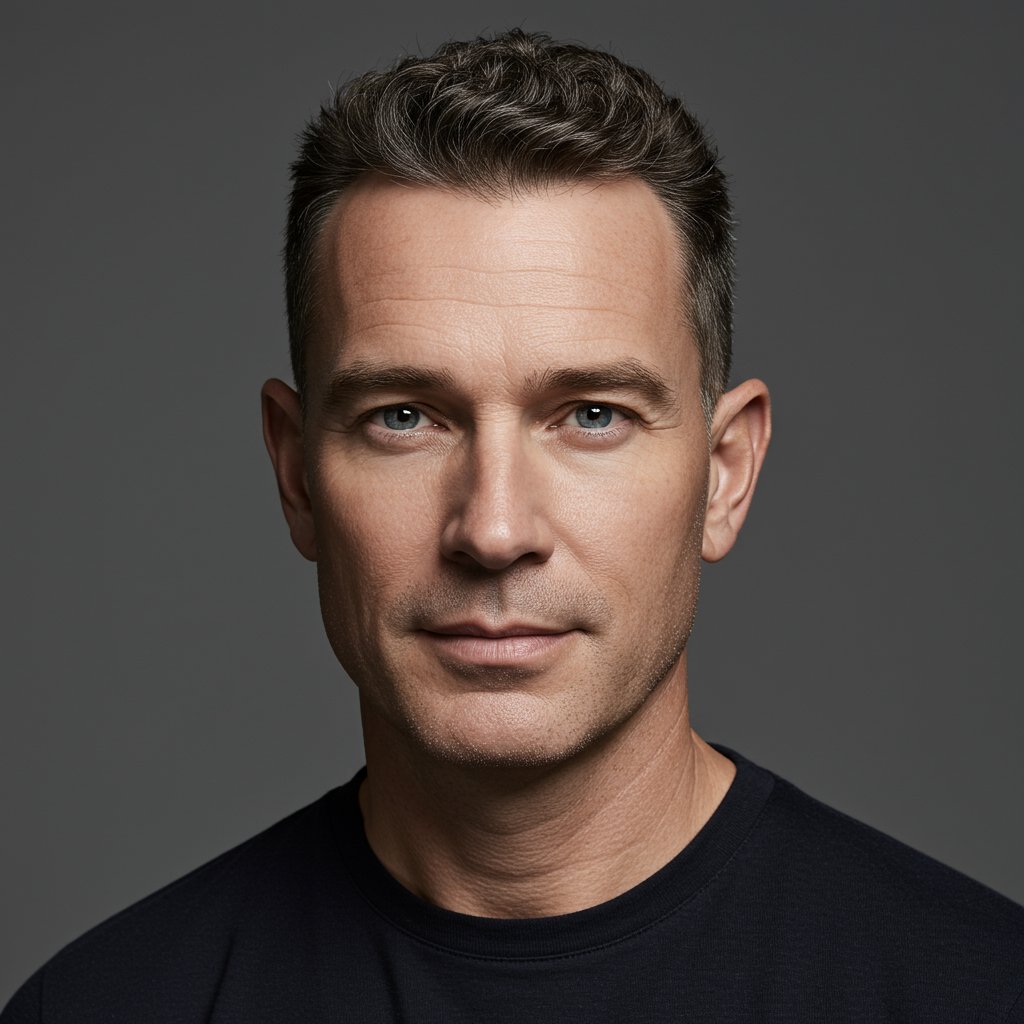
The Buzz Cut: Simple and Confident
A buzz cut is the ultimate power move. By cutting the hair uniformly short all over, you minimize the contrast between your forehead and your hairline, making the recession far less noticeable. It's a clean, low-maintenance look that exudes confidence and puts the focus squarely on your facial features. There are variations, from a one-length-all-over induction cut to a slightly longer burr cut, that an experienced barber can tailor to your head shape.The Crew Cut: Classic and Textured
The classic crew cut is a timeless choice for a reason. It keeps the sides and back very short (often faded) while leaving a bit more length on top. This length can be styled with a matte product to create texture and a slight lift, drawing the eye upward and away from the temples. It’s a versatile cut that works in both professional and casual settings, offering a neat and tidy appearance that cleverly de-emphasizes a receding hairline.The Slick Back Undercut: Modern and Strategic
For those with good density on top but high recession at the temples, the slick back undercut is a stylish, modern option. The sides are cut very short or faded, creating a dramatic disconnect from the longer hair on top. The top is then slicked back using a light-hold product. This style works because it intentionally exposes the temples as part of the look, reframing the hairline as a strong, angular feature rather than something to be hidden. It’s a bold style that requires confidence but pays off in spades.Best Haircuts for Thinning on the Crown (Vertex)
Thinning at the crown, or the vertex of the scalp, can be one of the trickiest areas to conceal. The key here is to use length and texture on top to provide coverage while keeping the overall shape clean and balanced.

The Textured Crop: Messy and Effective
The textured crop, also known as a French crop, is arguably one of the best hairstyles for thinning crowns. This cut involves short sides and a slightly longer top that is pushed forward. By adding a lot of choppy texture throughout the top and styling it forward with a matte clay or paste, you can effectively cover the thinning area on the crown. The slight fringe at the front also helps frame the face and can be beneficial for those with a co-occurring receding hairline.The High and Tight: Sharp and Distracting
Borrowed from military tradition, the high and tight features extremely short or faded sides that extend high up the head, leaving a small, defined patch of longer hair on top. This style works by creating such a strong, sharp contrast that the focus is entirely on the haircut's structure, not the density of the hair within it. The thinning on the crown becomes secondary to the clean, powerful lines of the cut. It's a strong, masculine look that requires minimal styling.The Faux Hawk: Upward and Voluminous
A subtle faux hawk can be an excellent way to divert attention from a thinning crown. By keeping the sides short and styling the hair on top upwards and towards the center, you create height and volume. This central lift naturally draws the eye along the top of the head, moving it past the vertex. The key is to keep it soft and textured, not spiky and severe like the faux hawks of the early 2000s. Use a volumizing mousse or powder for a light, airy hold.Hairstyles for Overall Diffuse Thinning
When hair is thinning more generally across the entire scalp rather than in a specific pattern, the goal is to maximize volume and create the illusion of fullness everywhere. Shorter cuts are almost always better in this scenario, as long hair will weigh itself down and appear stringy, exposing more scalp.

The Short Quiff: Lift and Volume
The quiff is a fantastic style for creating volume right at the front, which gives the entire haircut a fuller appearance. With short sides and a slightly longer front, the hair is styled up and back. Using a blow dryer and a volumizing product is key to achieving the necessary lift. This style works because the height at the front creates a strong focal point, making the rest of the hair appear more substantial by association.The Side Part with Volume: Timeless and Smart
A classic side part can still work with thinning hair, provided it’s done correctly. Avoid a deep, severe part line, which can expose the scalp. Instead, opt for a softer, less defined part. Keep the length relatively short and ask your stylist for texture to avoid a flat look. When styling, use a light mousse and blow-dry the hair into place to create lift at the roots, giving this timeless cut a modern, voluminous edge.The Longer, Layered Look (for wavy/curly hair)
For men blessed with natural waves or curls, diffuse thinning can be easier to manage. The natural texture and bend of the hair create volume on their own and help to conceal the scalp. A slightly longer, layered haircut can enhance this natural advantage. The layers remove weight, allowing the curls to spring up and create a fuller shape. It's crucial to use curl-defining products that don't weigh the hair down to maintain this voluminous effect.Styling Products and Techniques for Thicker-Looking Hair
A great haircut is only half the battle; the right products and techniques are what bring it to life and maximize its volumizing potential. The goal is to add texture, lift, and hold without weighing the hair down.
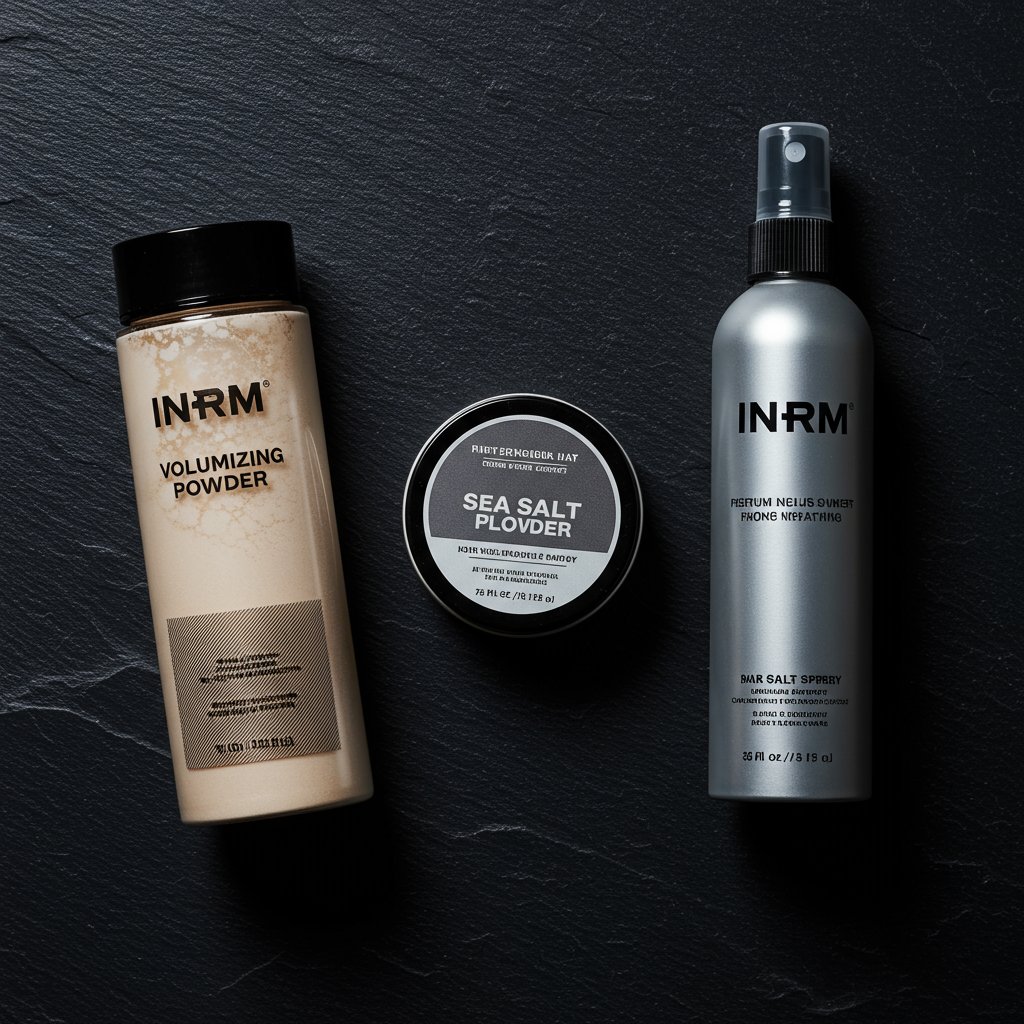
Choosing the Right Products
- Volumizing Mousse/Foam: Applied to damp hair before blow-drying, mousse coats each strand and expands with heat, creating a fuller foundation.
- Thickening/Texturizing Powder: These magic dusters are applied to dry roots. They contain particles that create friction between hair strands, providing instant, lightweight lift and a matte, gritty texture that makes hair feel and look much denser.
- Matte Clay or Paste: Unlike shiny pomades or gels that can clump hair together and reveal the scalp, matte-finish products absorb light and create a thicker appearance. They are perfect for creating textured, separated styles.
- Sea Salt Spray: A great pre-styler, sea salt spray adds grit and texture to the hair, mimicking the effect of a day at the beach and making it easier to build volume.
The Art of Blow-Drying for Volume
Your blow dryer is your most powerful styling tool. Start by applying a heat protectant and a volumizing pre-styler to damp hair. Begin by blow-drying your hair in the opposite direction of how it will finally lay. For example, to create lift for a quiff, blow-dry the hair forward first, then up and back. Using your fingers or a vent brush to lift the hair at the roots while drying will lock in volume. Finish with a cool shot of air to set the style in place.Beyond the Cut: Scalp Health and Professional Treatments
Creating the best look for thinning hair extends beyond the haircut. A healthy scalp is the foundation for healthy hair, so paying attention to scalp care is a non-negotiable step. Regular cleansing with a high-quality shampoo removes buildup from products, oils, and dead skin cells that can clog follicles and hinder growth. Look for ingredients like ketoconazole, salicylic acid, or peppermint oil, which can help maintain a clean and stimulated scalp environment.
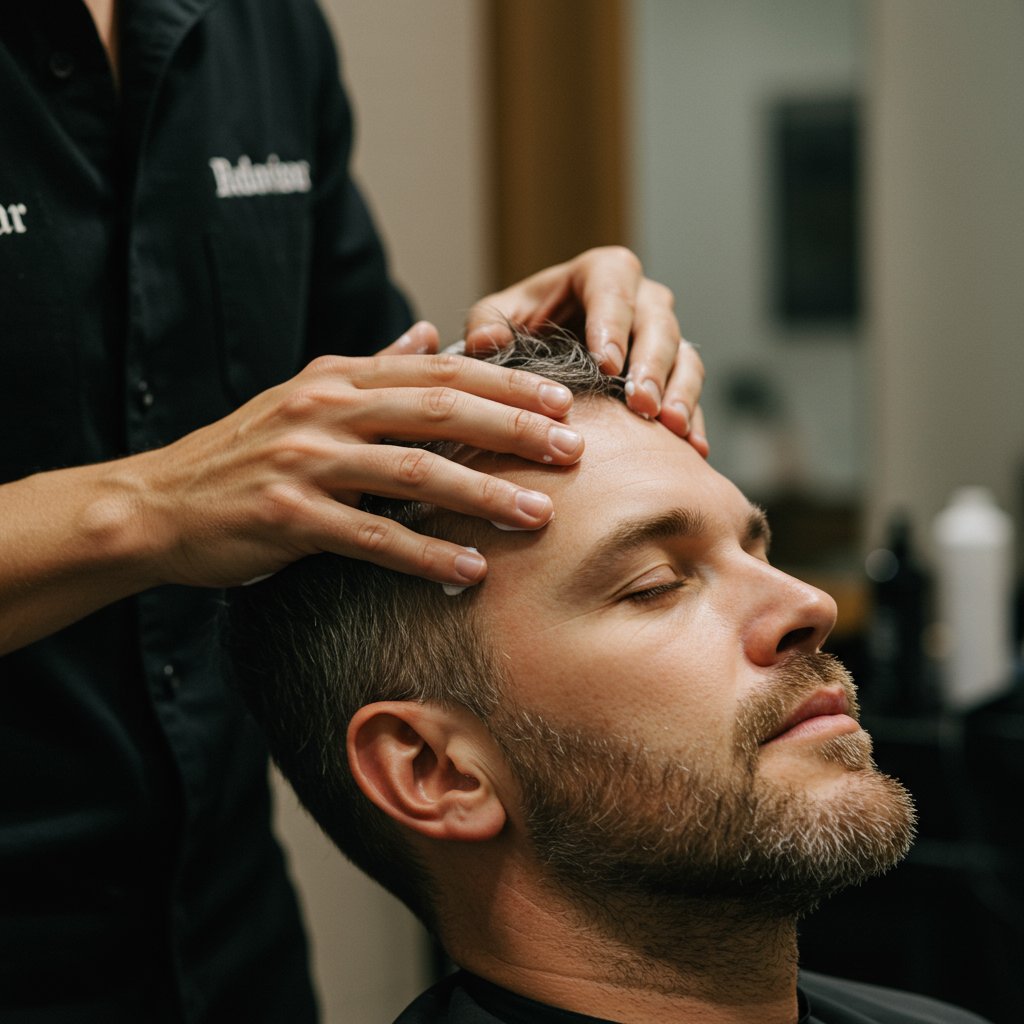
Many professional salons now offer specialized scalp treatments designed to address these issues. Services like scalp facials or detox treatments provide a deep clean, exfoliate the scalp, and use professional-grade products to nourish the follicles and improve circulation. These treatments not only feel incredible but can create a better environment for your existing hair to thrive, making it appear healthier and more vibrant. Discussing these options with your stylist can provide a holistic approach to managing your hair's health and appearance.
Finally, simple lifestyle adjustments can have a positive impact. A balanced diet rich in vitamins and minerals like biotin, iron, and zinc is essential for hair health. Managing stress, getting adequate sleep, and avoiding harsh chemical treatments can also contribute to maintaining the health of the hair you have. Combining smart lifestyle choices with a great haircut and targeted scalp care creates a comprehensive strategy for looking and feeling your best.
---
Frequently Asked Questions (FAQ)
Q1: Will cutting my hair shorter really make it look thicker?
Yes, in almost all cases. Long, thin hair gets weighed down, which causes it to lie flat against the scalp, emphasizing sparse areas. Shorter hair stands up from the scalp more easily, is lighter, and allows for texturizing techniques that create an immediate illusion of more density and volume.
Q2: What's the worst hairstyle for thinning hair?
The most notorious is the traditional comb-over, where long strands from one side are combed over a bald spot. It rarely deceives anyone and often draws more attention to the thinning area. Other poor choices include long, flat, one-length styles and greasy, slicked-back looks that use heavy, shiny products, as these tend to separate the hair and expose the scalp.
Q3: Should I use hair fibers?
Hair building fibers can be a fantastic temporary solution for adding visual density, especially for special events or photos. These are tiny, statically charged keratin fibers that you shake onto your hair, where they cling to existing strands, making them appear much thicker. They work best on dry, styled hair and can be locked in with a light mist of hairspray. They are a great confidence booster for many men.
Q4: How often should I wash thinning hair?
This depends on your hair and scalp type, but generally, washing every 1-2 days is recommended. Clean hair is fluffier and has more volume. When your hair and scalp become oily, the hair clumps together and lies flat, making thinning more apparent. Use a gentle, volumizing shampoo that doesn't strip the hair of all its natural oils.
Q5: Can hair color help disguise thinning?
Yes, strategic hair color can be very effective. A skilled colorist can use subtle highlights or lowlights to create dimension, which tricks the eye into seeing more depth and fullness. Additionally, the process of coloring itself can slightly swell the hair shaft, making each strand feel a bit thicker. It's also effective to dye your hair a shade closer to your scalp color to reduce the contrast, which makes thinning less obvious.
Q6: When should I consult a professional stylist about my thinning hair?
The moment you start feeling concerned about it is the perfect time. Don't wait until it's significantly advanced. An experienced stylist can assess your hair's current state, discuss your goals, and recommend a proactive plan that includes the right haircut, styling advice, and product recommendations. They are your best ally in navigating this journey with confidence.
Conclusion: Confidence is Your Best Style
Tackling thinning hair is not about finding a magic cure; it's about empowerment through knowledge and style. By understanding the principles of a great haircut, choosing a style that complements your specific pattern of hair loss, and mastering a few key styling techniques, you can create a look that is not only flattering but genuinely empowering. From a sharp buzz cut to a textured crop or a voluminous quiff, the options are plentiful and stylish.
Remember that millions of men share this experience. The most important takeaway is that confidence is the best look of all. A great haircut is simply the tool that helps you project that confidence to the world. Embrace the change, work with a skilled professional who understands the nuances of cutting thinning hair, and find a style that makes you feel like the best version of yourself. Your hair doesn't define you, but a fantastic hairstyle can certainly help you define your look on your own terms.


